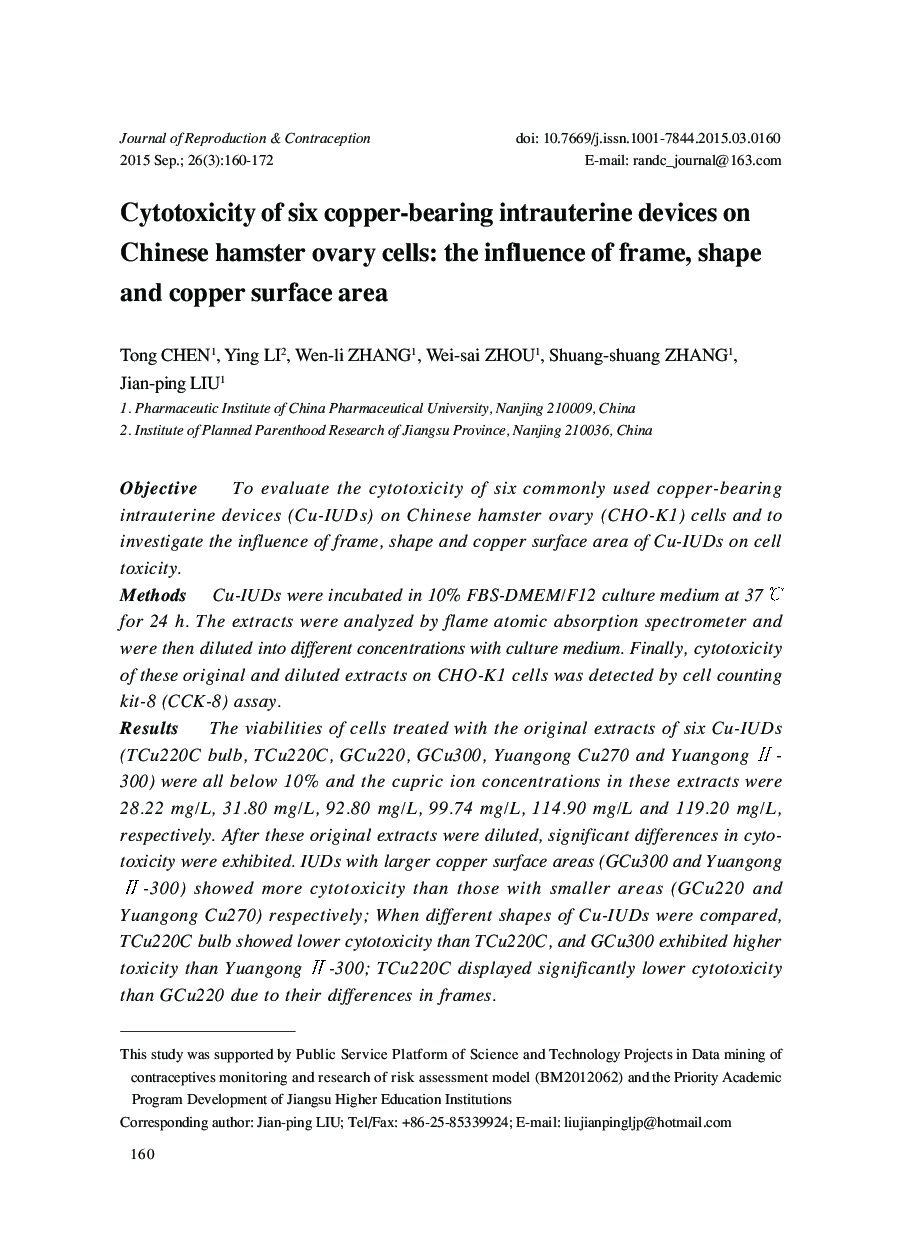| Article ID | Journal | Published Year | Pages | File Type |
|---|---|---|---|---|
| 3964163 | Journal of Reproduction and Contraception | 2015 | 13 Pages |
ObjectiveTo evaluate the cytotoxicity of six commonly used copper-bearing intrauterine devices (Cu-IUDs) on Chinese hamster ovary (CHO-K1) cells and to investigate the influence of frame, shape and copper surface area of Cu-IUDs on cell toxicity.MethodsCu-IUDs were incubated in 10% FBS-DMEM/F12 culture medium at 37 °C for 24 h. The extracts were analyzed by flame atomic absorption spectrometer and were then diluted into different concentrations with culture medium. Finally, cytotoxicity of these original and diluted extracts on CHO-K1 cells was detected by cell counting kit-8 (CCK-8) assay.ResultsThe viabilities of cells treated with the original extracts of six Cu-IUDs (TCu220C bulb, TCu220C, GCu220, GCu300, Yuangong Cu270 and Yuangong II-300) were all below 10% and the cupric ion concentrations in these extracts were 28.22 mg/L, 31.80 mg/L, 92.80 mg/L, 99.74 mg/L, 114.90 mg/L and 119.20 mg/L, respectively. After these original extracts were diluted, significant differences in cytotoxicity were exhibited. IUDs with larger copper surface areas (GCu300 and Yuangong II-300) showed more cytotoxicity than those with smaller areas (GCu220 and Yuangong Cu270) respectively; When different shapes of Cu-IUDs were compared, TCu220C bulb showed lower cytotoxicity than TCu220C, and GCu300 exhibited higher toxicity than Yuangong II-300; TCu220C displayed significantly lower cytotoxicity than GCu220 due to their differences in frames.ConclusionWe presented evidence on the cytotoxic effects of copper ions released from Cu-IUDs on CHO-K1 cells and found that shape, frame together with copper surface area of Cu-IUDs had obvious influence on the cytotoxicity.
